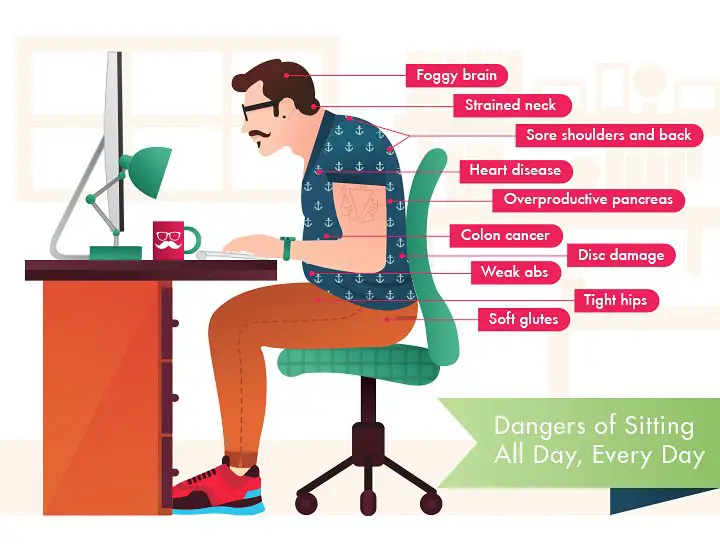The implementation of an effective ergonomics program includes a commitment by the employer to provide the visible involvement of top management, so that all employees, from management to line workers, fully understand that management has a serious commitment to the program. An effective program should have a team approach, with top management as the team leader, and should include the following:
- Assign and communicate responsibilities for setting up and managing the ergonomics program.
- Provide authority, resources, information, and necessary training.
- Examine existing policies and practices to assure they encourage early reporting and do not discourage reporting ergonomic related or MSD related injuries.
- Take reasonable action(s), whenever and wherever possible.
- Communicate regularly with employees about the status of the program including assessments and action(s) taken by means of postings, meetings, etc..

ERGONOMICS
It is the policy of YOUR COMPANY to improve and maintain a working ergonomic program that is compatible to the comfort and wellbeing of our employees by identifying and minimizing ergonomic risk factors in the work place. The objective of any safety initiative is to prevent injuries and illnesses by removing their causes. This should be a careful, step-by step look at the worksite to find out where hazards leading to Musculoskeletal Disorders (MSDs) exist. YOUR COMPANY’s Ergonomic Program will match or beat those standards set by our type of industry.
Ergonomics (or human factors) also known as Musculoskeletal Disorders is the scientific discipline concerned with the understanding of the interactions among human and other elements of the worksite. If used properly ergonomics designs will optimize human well-being and overall system performance. Ergonomics seeks to adapt the job and workplace to the worker by designing tasks and tools that are within the worker’s capabilities and limitations.
Musculoskeletal disorders (MSDs) are disorders of the muscles, nerves, tendons, ligaments, joints, cartilage and spinal discs. MSDs do not include disorders caused by slips, trips, falls, motor vehicle accidents, or other similar accidents. Examples of MSDs include: Carpal tunnel syndrome, Rotator Cuff Syndrome, De Quervain’s Disease, Trigger Finger, Tarsal Tunnel syndrome, Sciatica, Epicondylitis, Tendonitis, Raynaud’s Phenomenon, Herniated Spinal disc, and Low Back pain.
Musculoskeletal Disorders (MSDs) along with other work-related disorders have been noted in the meatpacking industry over the years. YOUR COMPANY’s Ergonomic Program has been developed to effectively identify and prevent work-related musculoskeletal disorders through our seven recommended program elements. They are as follow.
- Management Leadership and Employee Participation
- Hazard Identification and Prevention
- Analysis and Measurements
- Training
- Medical Management
- Monitoring Measurements and Evaluations
- Recordkeeping
While all of these elements should play a part in all of the Plant operations, the one part that should receive first attention is worksite analysis. Work-related MSDs are the result of mismatching between the physical capacity of the employee and their equipment and physical demands of the job being preformed. The key to worksite analysis is to find out what actual or potential hazards currently exist in the workplace that would cause musculoskeletal disorders. The employer will look at the Plant’s injury/illness records, review any workers compensation claims, look at the work as it is being done and ask questions of employees to see if there are any ergonomic problems. The employer will use this information to identify jobs that appear to have ergonomic related problems, and determine if those jobs involve ergonomic risk factors. The facility should then take whatever measures are appropriate including those set forth in the guidelines – to address the problems found, if any. If no problems exist, the employer will continue to monitor and maintain current efforts to sustain a safe and healthful workplace.
WRITTEN PROGRAM
The written program should be communicated to all personnel, as it encompasses the total workplace, regardless of number of workers employed or the number of work shifts. It should establish clear goals, and objectives to meet those goals, that are communicated to and understood by all member of the organization.
The following template can be used to help your organization develop a written Ergonomics Program. This template cannot be used as is – you must customize the template to meet the needs of your organization. We have made this template easier for you to customize by adding visual prompts that identify some areas where your input is needed. These are identified by Red highlighted, red text in the template. You may also change any of the text in the template to meet your organization’s needs – for example, Company department names, job titles, listed responsibilities and audiologist.
Disclaimer. This sample Ergonomics program template cannot be used as is. You must customize the template to meet the needs of your organization. HSSE WORLD does not guarantee that this template is or can be relied on for compliance with any law or regulation, assurance against preventable losses, or freedom from legal liability. We make no representations or warranties of any kind whatsoever, either express or implied, in connection with the use of this template. HSSE WORLD will not be liable for your use of the template as customized by you. All safety programs and policies, including this template and the information you supply to complete it, should be reviewed by your legal counsel and/or risk management staff.







102 thoughts on “Templates:Ergonomics Program and Ergonomic Assessment Tool”